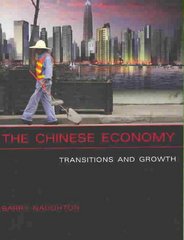I. A Solow Growth Model with Factor Income Invested (65 Points) Let us consider a production economy endowed with a single perfectly competitive firm renting at every time t both labour and physical capital from households at the real rental rates Wt, It, respectively. In equilibrium at time t. Wt = MPL, and It = MPK, where MPL, and MPK, denote the marginal product of labour and the marginal product of physical capital, respectively. The aggregate output/income Y, at every time t is produced according to the following production function: Yt = ZK1-LE where 2>0 stands for the total factor productivity parameter, K, represents the physical capital and L: denotes the number of workers with & c(0,1) stands for the labour share of output parameter. Let us assume that a constant fraction ye(0,1) of the total household population of size N, works at every time t. Lt = YNt The aggregate population of households grows at a constant rate ne(0, + 20): Nt+1 = (1 +n)N The law of motion for the physical capital from time t to time t+1 can be written as: where de(0,1) represents the physical capital depreciation rate parameter and , denotes the aggregate investment in physical capital at time t which is equal to the aggregate saving in equilibrium: It = St Let y, = denote the output/income per capita at time t and let k, = = stand for the Nt physical capital per capita at time t.a. Derive the marginal product of labour and the marginal product of physical capital schedules at time t. (10 points) b. Show that in equilibrium, the aggregate output/income at time t is the sum of the aggregate labour income: w L. and the aggregate physical capital income: r,K. (10 points) c. Write-down the production function in per capita units. (5 points) d. Write-down the equilibrium law of motion of the physical capital per capita if all the labour income is saved: St = W,Ly. Derive the steady-state physical capital per capita and the steady-state output/income per capita. (15 points) e. Write-down the equilibrium law of motion of the physical capital per capita if all the physical capital income is saved: St = rK. Derive the steady-state physical capital per capita and the steady-state output/income per capita. (15 points) h. Derive the steady-state consumption per capita associated with the steady-state solutions found in d. and e. Which of the two steady-state solutions has the highest steady-state consumption per capita? (10 points)








